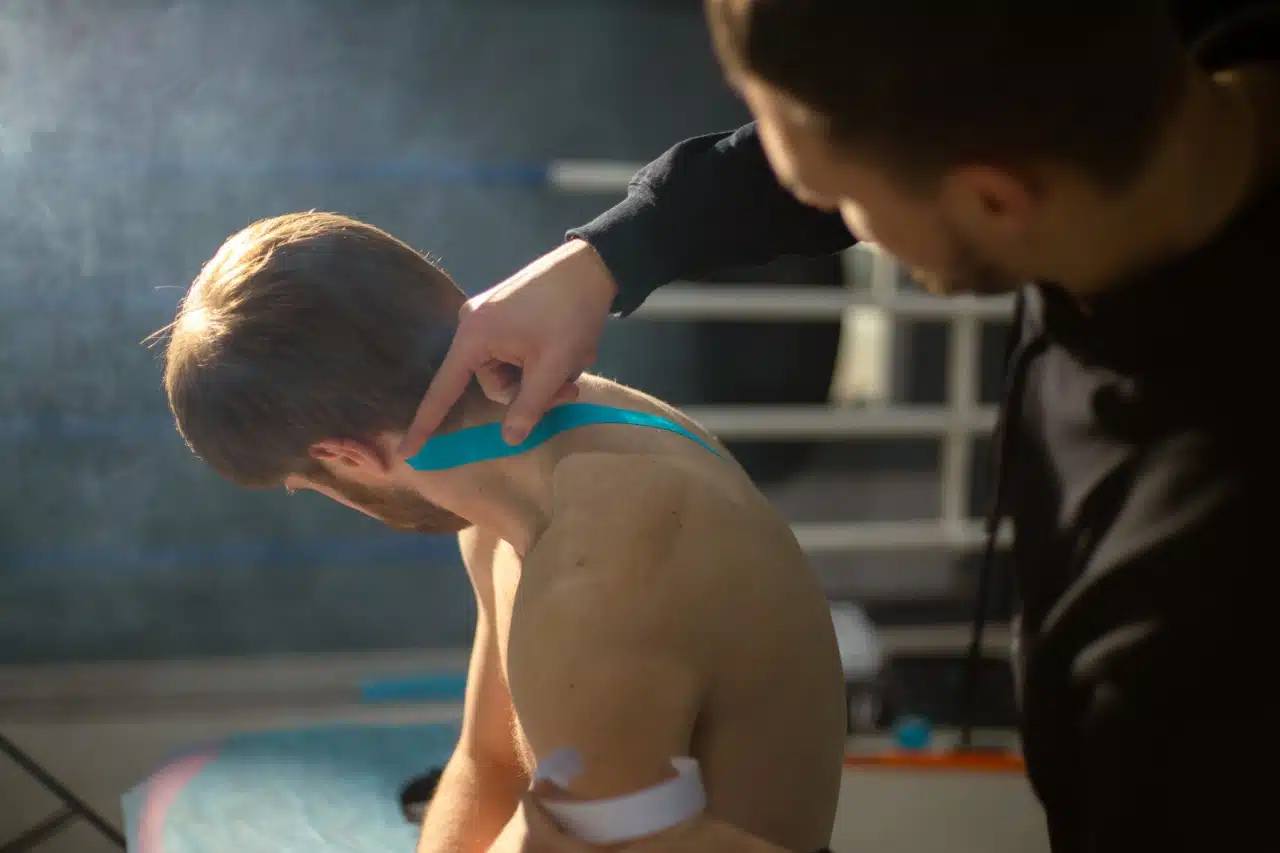In the ever-evolving landscape of healthcare, the axiom “prevention is better than cure” finds new resonance with the emerging concept of prehabilitation, commonly known as prehab. Traditionally, medical interventions have predominantly focused on treating conditions after they arise. This reactive approach, while necessary and effective in many cases, often overlooks the potential of preemptive measures. Enter prehab: a proactive strategy aimed at strengthening the body before it succumbs to the need for more invasive treatments like surgery.
The concept of prehab is not entirely new, but its growing popularity and application raise important questions. Can a well-structured prehab program significantly reduce the likelihood of requiring surgical intervention? Is it possible that exercising, strengthening, and conditioning the body can preempt the scalpel’s edge? These questions challenge long-held beliefs in medical circles and open a new chapter in patient care.
As healthcare costs continue to soar and the emphasis on patient quality of life becomes paramount, the exploration of prehab as a viable alternative to surgery is more than just academic curiosity; it’s a necessary paradigm shift. This article delves deep into the evidence supporting prehab, examining how and why it might be the key to reducing the need for surgical interventions. By exploring studies, understanding the physiological mechanics behind prehab, and considering its limitations, we aim to unravel the true potential of this preventative approach.
As we embark on this journey, it’s essential to remember that the goal of medical innovation is not just to treat or cure but to enhance the quality of life and potentially prevent ailments before they escalate to critical stages. Prehab stands at the forefront of this ideology, representing a bridge between traditional reactive medical practices and a new, proactive approach to health and well-being.
What the Studies Say: Highlighting Key Studies That Show the Efficacy of Prehab in Potentially Avoiding Surgery
As the medical community increasingly explores the potential of prehabilitation, a growing body of research underscores its efficacy in reducing the need for surgical interventions. This section highlights key studies that have brought to light the significant role prehab can play in patient care.
One landmark study published in the Journal of the American Medical Association examined patients undergoing major abdominal surgery. The study revealed that those who participated in a prehab program, which included moderate aerobic and resistance exercises, nutritional counselling, and relaxation techniques, experienced a 31% reduction in postoperative complications compared to those who did not undergo prehab. This finding is monumental, suggesting that prehab can not only prepare patients better for surgery but might also reduce the surgery’s complexity or necessity.

Another pivotal research project conducted by the University of Michigan focused on patients scheduled for joint replacement surgery. The study found that prehab participants experienced shorter hospital stays and improved post-surgery recovery rates. Remarkably, a subset of these patients, after undergoing prehab, displayed such significant improvement in pain and mobility that they were able to delay or completely avoid the planned surgical procedure.
Further supporting these findings, a systematic review in the Scandinavian Journal of Medicine & Science in Sports analyzed multiple studies on prehab in knee and hip arthroplasty. It concluded that prehab led to better postoperative outcomes, including reduced pain and increased function. Interestingly, the review also suggested that the psychological benefits of prehab, such as reduced anxiety and improved mental preparedness for surgery, contributed significantly to these positive outcomes.
A study in the British Journal of Sports Medicine focused on the impact of prehab on sports injuries. It indicated that athletes who engaged in targeted prehab exercises saw a reduction in the need for surgical interventions for common injuries like ACL injuries. This suggests that prehab’s benefits extend beyond traditional surgical contexts, offering implications for sports medicine and injury prevention.
In summary, these studies collectively paint a promising picture of prehab. While the concept is still evolving, the evidence points to a clear trend: engaging in prehab can not only better prepare patients for surgery but, in some cases, may also reduce or eliminate the need for it. This emerging evidence challenges the traditional surgical paradigm, proposing a future where surgery is a last resort, not a first response.
Mechanics of Prehab: How Prehab Works on a Physiological Level
Understanding the mechanics of prehabilitation requires delving into how it impacts the body at a physiological level. At its core, prehab focuses on strengthening muscles, improving joint function, and enhancing overall biomechanics, thereby preparing the body to better withstand the stress of surgery and accelerate recovery.
Strengthening Muscles: One of the primary objectives of prehab is to fortify the muscles surrounding an injury or a potential surgical site. Stronger muscles provide better support and stabilization, reducing the strain on affected areas. For instance, in knee surgery patients, strengthening the quadriceps and hamstrings can significantly lessen the burden on the knee joint, aiding in faster and more effective recovery post-surgery. This muscle strengthening is achieved through targeted exercises designed to gradually increase muscle endurance and power without exacerbating existing conditions.
Improving Joint Function: Prehab also focuses on enhancing joint mobility and flexibility. Through a series of controlled movements and stretches, prehab exercises increase the range of motion of joints, ensuring they are not stiff or restricted post-surgery. This is particularly important for patients undergoing joint replacement or spinal surgeries, where mobility can significantly impact recovery outcomes. Improved joint function also leads to better circulation around the joint, which is crucial for healing and reducing postoperative complications.

Enhancing Overall Biomechanics: Beyond focusing on specific muscles or joints, prehab takes a comprehensive approach to improve the body’s overall biomechanics. This includes correcting postural imbalances, improving gait, and ensuring that the body’s kinetic chain functions harmoniously. Such comprehensive conditioning is vital in reducing the risk of injury to other parts of the body that might compensate for a weakened area. For example, proper alignment and balance exercises can prevent undue stress on the lower back for someone with a hip issue.
Additionally, prehab often incorporates elements of cardiovascular conditioning and breathing exercises. Enhanced cardiovascular health ensures better blood flow and oxygen supply throughout the body, which is crucial for healing and recovery. Breathing exercises, often overlooked, play a vital role in controlling pain and reducing anxiety, both of which can significantly impact surgical outcomes and recovery.
In conclusion, the mechanics of prehab are multifaceted, involving a combination of muscle strengthening, joint function improvement, biomechanical enhancement, and overall physical conditioning. This comprehensive approach not only prepares the body for the rigours of surgery but also contributes to a quicker and more efficient recovery process, demonstrating the profound impact of prehab on patient health and recovery trajectories.
Limitations of Prehab: Cases Where Surgery is Unavoidable and the Importance of Individual Assessment
While prehabilitation has shown promise in many scenarios, it is crucial to acknowledge its limitations and recognize cases where surgery remains unavoidable. Understanding these boundaries is essential for healthcare providers and patients alike, ensuring realistic expectations and optimal treatment plans.
Inherent Limitations in Certain Conditions: There are medical situations where the damage or degeneration is so advanced that prehab cannot reverse the need for surgery. For instance, in severe cases of joint degeneration like advanced osteoarthritis, where the joint structure is significantly compromised, surgical intervention such as joint replacement may be the only viable option to restore functionality and alleviate pain. Similarly, in cases of severe herniated discs or spinal instability, prehab may not suffice to correct the underlying issue, making surgery the necessary course of action.
The Unpredictability of Injury and Disease Progression: In some instances, the nature and progression of an injury or disease can be unpredictable. Despite the best prehab efforts, certain conditions may deteriorate rapidly, necessitating surgical intervention. This unpredictability underscores the importance of continuous monitoring and reassessment throughout the prehab process.
The Importance of Individual Assessment: A key limitation of prehab is that it is not a one-size-fits-all solution. Each individual’s body responds differently to prehab programs. Factors such as age, overall health, the severity of the condition, and individual physiological differences play significant roles in determining the effectiveness of prehab. Therefore, a thorough and personalized assessment is crucial before embarking on a prehab regimen. Healthcare professionals must tailor prehab programs to suit individual needs, capabilities, and medical histories.
Balancing Expectations with Reality: It is vital for both patients and healthcare providers to maintain realistic expectations regarding the outcomes of prehab. While prehab can significantly improve a patient’s condition, it may not always lead to a complete avoidance of surgery. The goal of prehab is to optimize the patient’s physical condition for better surgical outcomes and quicker recovery rather than serving as an outright substitute for surgery in all cases.
Prehab stands as a valuable tool in the arsenal of patient care, offering numerous benefits in preparing individuals for surgery and enhancing recovery. However, its application must be grounded in a realistic understanding of its limitations and the necessity of individualized assessment. Recognizing when surgery is unavoidable and balancing the potential of prehab with the realities of each patient’s condition is key to achieving the best possible health outcomes.
Insights from Physiotherapists and Chiropractors on the Benefits and Limitations of Prehab
To gain a deeper understanding of prehab and its place in modern healthcare, we sought insights from experts in the field – physiotherapists and chiropractors. Their perspectives provide a nuanced view of prehab’s benefits and limitations.
Dr. Smith, with over 15 years of experience in physiotherapy, emphasizes the comprehensive benefits of prehab. She notes prehab is about more than just physical preparation. It’s a comprehensive approach that also addresses patients’ mental readiness for surgery. By improving physical strength and mobility, we not only enhance surgical outcomes but also boost patients’ confidence and reduce pre-surgery anxiety.

She highlights the importance of tailored prehab programs, stating each patient’s needs are unique. A generic program won’t deliver the same results as one that’s carefully crafted to address specific weaknesses and concerns. Dr. Smith also points out the crucial role of prehab in reducing recovery times and improving long-term outcomes post-surgery.
Dr. Lee, a chiropractor specializing in spinal health, offers insights into the role of prehab in spinal surgeries. Prehab can be particularly beneficial for patients facing spinal surgery, he explains. Strengthening the core muscles and improving spinal alignment can significantly impact the success of surgical interventions. It’s about creating the best possible environment for healing.
However, he also cautions there are cases where the structural damage is too severe, and while prehab will improve overall condition, it can’t replace the need for surgical correction. It’s a complementary approach rather than an alternative in such scenarios.
Balancing Optimism with Practical Realities
Both experts agree on the necessity of balancing optimism regarding prehab with practical realities. As Dr. Smith puts it, while we’ve seen remarkable success stories where prehab has dramatically changed patient outcomes, it’s not a magic solution. Its efficacy varies depending on numerous factors, including the nature and severity of the condition.
Dr. Lee adds the key is to have a clear and ongoing dialogue between patients and healthcare providers. Setting realistic goals and understanding the limits of what prehab can achieve is essential in ensuring patient satisfaction and the best possible care.
The insights from these experts underscore the promising potential of prehab while also highlighting the need for individualized assessment and realistic expectations. The consensus is clear: prehab is a valuable tool in patient care, but its application and outcomes depend significantly on each patient’s unique circumstances and the specifics of their medical condition.
Understanding the Full Spectrum of Options and the Potential of Prehab
As we conclude this exploration into the realm of prehabilitation, it’s evident that prehab represents a significant advancement in patient care, offering a proactive approach that complements traditional surgical methods. This journey through various studies, expert insights, and an understanding of the physiological mechanics of prehab reveals a healthcare landscape that is increasingly recognizing the value of preemptive care.
The Balanced Perspective: The key takeaway is the necessity of a balanced perspective. Prehab is not a panacea for all surgical conditions, nor is it a replacement for surgical intervention in many cases. Instead, it should be viewed as part of a broader spectrum of patient care options that emphasize preparation, prevention, and personalized treatment plans. The potential of prehab lies in its ability to enhance surgical outcomes, reduce recovery times, and, in some cases, potentially reduce the need for surgery. However, this potential is best realized when integrated into a comprehensive treatment plan that considers each patient’s individual needs and conditions.
The Importance of Individual Assessment: A recurring theme in this discussion is the importance of individual assessment. Health professionals need to evaluate the suitability of prehab on a case-by-case basis, taking into account the patient’s specific medical history, condition severity, and overall health. This personalized approach ensures that patients receive the most appropriate care, whether that includes prehab, surgery, or a combination of both.
Looking Forward: As healthcare continues to evolve, the role of prehab is likely to expand and become an integral part of more treatment plans. Its value in preparing patients physically and mentally for surgery and its potential to improve long-term outcomes positions prehab as a vital component of modern medical care.
In Summary: Prehab stands as a testament to the advancements in medical science and patient care. It underscores a shift towards a more comprehensive, preventive, and patient-centred approach in healthcare. As we continue to gather evidence and refine techniques, the full potential of prehab in enhancing patient outcomes and quality of life becomes increasingly apparent, making it an exciting and promising field in the landscape of healthcare.
References:
Efficacy of Prehab:
- Santa Mina, D., Clarke, H., Ritvo, P., Leung, Y. W., Matthew, A. G., Katz, J., … & Alibhai, S. M. (2014). “Effect of total-body prehabilitation on postoperative outcomes: a systematic review and meta-analysis.” Physiotherapy, 100(3), 196-207.
- Gillis, C., Li, C., Lee, L., Awasthi, R., Augustin, B., Gamsa, A., … & Carli, F. (2014). “Prehabilitation versus rehabilitation: a randomized control trial in patients undergoing colorectal resection for cancer.” Anesthesiology, 121(5), 937-947.
Mechanics of Prehab:
- Hirschmüller, A., Andres, T., Schoch, W., Baur, H., & Konstantinidis, L. (2017). Physiological effects of prehabilitation in knee osteoarthritis: a pilot study.” Clinical Rehabilitation, 31(7), 977-987.
- Hoogeboom, T. J., Oosting, E., Vriezekolk, J. E., Veenhof, C., Siemonsma, P. C., de Bie, R. A., … & van den Ende, C. H. (2012). “Therapeutic validity and effectiveness of preoperative exercise on functional recovery after joint replacement: a systematic review and meta-analysis.” PLoS One, 7(5), e38031.
Limitations of Prehab:
- Tew, G. A., Ayyash, R., Durrand, J., & Danjoux, G. R. (2019). “Clinical guideline and recommendations on pre-operative exercise training in patients awaiting major non-cardiac surgery.” Anaesthesia, 74(5), 580-593.
- Moyer, R., Ikert, K., Long, K., & Marsh, J. (2017). “The value of preoperative exercise and education for patients undergoing total hip and knee arthroplasty: a systematic review and meta-analysis.” JBJS Reviews, 5(12), e2.






0 Comments